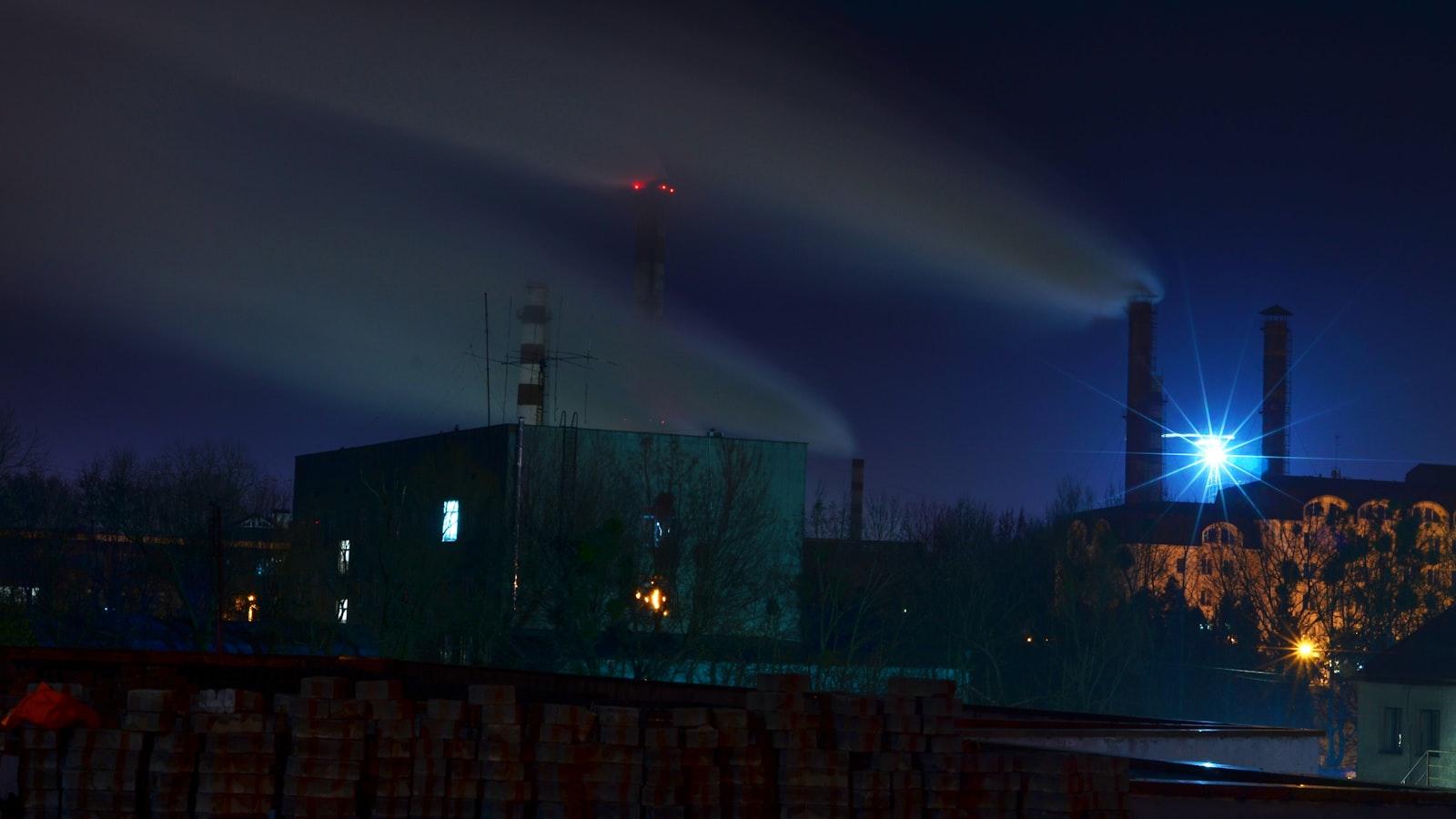In a world characterized by rapid technological advancements, the remnants of our progress lie hidden beneath the surface, concealed away from public view. These silent and often forgotten zones, known as toxic waste sites, hold a dark secret that permeates the environment and undeniably impacts our health. Unseen yet tangible, the long-term effects of these sites linger like a ghostly presence, haunting the communities living in their shadow. Delving into these murky depths, this article seeks to shed light on the intricate relationship between toxic waste sites and our well-being, unraveling the enigma that shrouds their existence. Brace yourself, as we embark on a journey to understand the unseen forces that silently shape our lives, aiming to unlock a clearer path to a healthier future.
The Invisible Threat: Unveiling the Long-Term Impacts of Toxic Waste Sites
Many may not realize the hidden dangers that lie beneath the surface of toxic waste sites. These sites, often hidden away from public view, pose a significant long-term threat to both the environment and human health. Toxic waste is composed of hazardous materials that can linger for decades or even centuries, infiltrating the soil, water, and air we rely on for sustenance and survival.
One of the most concerning aspects of toxic waste sites is the impact they have on human health. Exposure to these hazardous substances can lead to a wide range of illnesses and conditions, some of which may not manifest for years or even generations. The long-term effects can include respiratory problems, neurological disorders, various types of cancers, and reproductive issues. **These impacts are not limited to individuals living in close proximity to the site**, as pollutants can travel through air and water, spreading further into nearby communities and potentially affecting a much larger population.
| Impact | Example |
| Respiratory Problems | Asthma and chronic bronchitis |
| Neurological Disorders | Developmental delays and cognitive impairment |
| Cancers | Lung, liver, and bladder cancers |
| Reproductive Issues | Fertility problems and birth defects |
It is crucial to prioritize the understanding and mitigation of the long-term impacts of toxic waste. Communities at risk need access to accurate information, resources, and support to safeguard their health and the well-being of future generations. By raising awareness about these invisible threats and advocating for stricter regulations and cleanup efforts, we can work towards preventing further harm and creating a safer, healthier environment for all.

Unraveling the Health Consequences: Exploring the Effects of Toxic Waste Exposure on Communities
Living near toxic waste sites can have severe long-term impacts on the health of communities, making it crucial to better understand the consequences of toxic waste exposure. The effects can be wide-ranging, affecting both physical and mental well-being. Here are some key considerations:
1. Increased risk of chronic illnesses: Exposure to toxic waste can lead to the development of various chronic illnesses such as cancer, respiratory diseases, and cardiovascular disorders. The harmful chemicals present in these sites can affect the functioning of vital organs and systems over time, compromising the overall health of individuals within the community.
2. Impaired cognitive function: Toxic chemicals present in waste sites have the potential to impair cognitive abilities, particularly in children. Studies have shown a correlation between exposure to toxic waste and lower IQ levels, learning disabilities, and developmental delays in exposed populations. The lasting impact on the cognitive development of individuals can hinder educational outcomes and limit professional opportunities.
3. Adverse reproductive effects: Toxic waste exposure has been associated with reproductive disorders and complications. Both male and female fertility can be affected, leading to difficulties in conceiving. Additionally, increased rates of birth defects and pregnancy complications have been observed in communities residing near these sites.
Examining Community Impact
Aside from the direct health consequences, toxic waste exposure also affects communities in various ways:
- Environmental degradation
- Economic burdens
- Displacement and social disruption
- Stigmatization and emotional distress
The presence of toxic waste sites not only poses a health risk but also creates a multidimensional impact on communities that extends beyond individual health outcomes. Understanding these long-term impacts is essential for developing effective strategies to mitigate the negative consequences of toxic waste exposure and safeguard the well-being of affected communities.
| Chemical | Health Impact |
|---|---|
| Lead | Neurological damage, impaired growth and development |
| Mercury | Neurological damage, cardiovascular effects |
| Asbestos | Lung cancer, mesothelioma, respiratory diseases |

Safeguarding Public Health: Strategies for Mitigating the Risks Posed by Toxic Waste Sites
When it comes to the impact of toxic waste sites on public health, understanding the long-term consequences is crucial. These sites, often the result of improper disposal of hazardous materials, can pose serious risks to both the environment and human health. It is important to have strategies in place to mitigate these risks and safeguard public well-being.
One key strategy for addressing the risks posed by toxic waste sites is proper monitoring and assessment. Regular evaluations of these sites allow for the identification of potential health threats and enable authorities to take necessary actions to protect the community. This includes conducting comprehensive health assessments of nearby residents to determine if they are experiencing any adverse effects. Additionally, ongoing monitoring of air, soil, and water quality in the vicinity of these sites is essential to ensure that any contamination is promptly addressed.
| Strategy | Implementation | Benefits |
|---|---|---|
| Community Education | Informing residents about the risks associated with toxic waste sites and providing guidance on preventive measures. | Empowering individuals to protect their health and well-being. |
| Remediation Technologies | Implementing advanced techniques to remove, contain, or neutralize hazardous substances found in toxic waste sites. | Reducing the potential exposure of the community to toxic substances. |
| Economic Redevelopment | Revitalizing contaminated areas through sustainable and safe redevelopment projects. | Promoting community growth while ensuring public health and environmental protection. |
Furthermore, community education plays a vital role in mitigating the risks associated with toxic waste sites. By informing residents about the dangers posed by these sites and providing guidance on preventive measures, individuals can take steps to protect their health and minimize exposure to toxic substances. This may include promoting safe gardening practices, encouraging the use of protective equipment when near contaminated areas, and raising awareness about potential health symptoms related to exposure to hazardous materials.
Implementing remediation technologies is another crucial strategy for safeguarding public health. Advanced techniques, such as bioremediation and thermal treatment, can be used to remove, contain, or neutralize hazardous substances present in toxic waste sites. By employing these methods, the potential exposure of the community to harmful materials can be significantly reduced, minimizing the health risks associated with these sites.
Building a Sustainable Future: Recommendations for Addressing Toxic Waste Sites and Ensuring Health Equity
With the growing concern over the impact of toxic waste sites on public health, it is crucial to delve into the long-term consequences and develop effective strategies to address this issue. Toxic waste sites, often remnants of industrial activities or improper waste disposal, can release harmful pollutants into the environment, posing significant health risks for nearby communities. The repercussions extend far beyond just immediate exposure, as these toxins can persist in the soil, air, and water for years, endangering both present and future generations.
Understanding the long-term impacts of toxic waste sites is the first step towards building a sustainable future. It is essential to establish comprehensive research efforts to investigate the extent of contamination and its health effects. By conducting thorough studies, we can gain valuable insights into the pathways through which toxins spread, the populations most vulnerable to their effects, and the best measures to mitigate the harm caused.
Final Thoughts
As we conclude our exploration into the haunting world of toxic waste sites and their lasting impacts on human health, it is impossible not to be overwhelmed by a sense of unease and concern. The tales we’ve uncovered are a chilling reminder of the hidden dangers that lie beneath the surface, threatening the very fabric of our existence.
In delving deep into the realms of contamination, we have witnessed how these toxic wastelands silently stealth their way into our lives, insidiously polluting our air, water, and soil. The repercussions span far beyond random bouts of illness, reaching into the depths of our genetic makeup and leaving an indelible mark on future generations.
Amidst the discomfort that lingers, there is also a call to action. It is crucial, now more than ever, that we become vigilant guardians of our environment, valuing its sanctity and actively working towards its preservation. Together, we can enact change and demand the responsible treatment of toxic waste, ensuring that the sins of our past do not haunt our future.
As we bid farewell to this troubling chapter, let us not turn a blind eye to the looming specter of toxicity. Rather, let us carry the weight of awareness upon our shoulders and commit ourselves to a collective effort of prevention, remediation, and education. Our health, the health of future generations, and the delicate harmony of our planet depend on it.
In the face of adversity, knowledge empowers us. Knowledge sparks conversations, drives innovation, and fosters compassion. Let us embark on a journey of discovery, arming ourselves with the understanding needed to unravel the complexities of toxic waste sites and their long-term impact on our health.
May this exploration serve as a stepping stone towards a safer, healthier future. May it awaken the dormant sense of responsibility within us all, urging us to defend our communities against the unseen menace of toxic waste. Only through understanding and action can we strive towards a world where every life is free from the clutches of contamination.
As we part ways, it is our hope that this article has ignited a flame within you, fueling your quest for knowledge and driving you to become an advocate for change. Together, let us forge a path towards a future in which the tales of toxic waste sites and their agonizing effects become nothing more than long-forgotten whispers lost in the winds of time.



